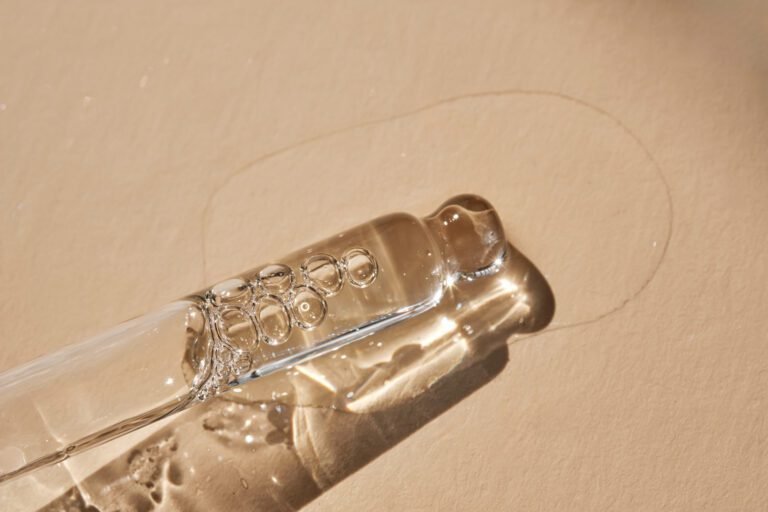The future of topical skincare lies in precision. Instead of treating the entire face with uniform formulations, modern cosmetic science is moving toward **targeted delivery systems**. Bioadhesive patch cosmetics embody this evolution. These advanced polymer films adhere to specific skin zones, maintaining prolonged contact and controlled release of actives exactly where they are needed. Consequently, bioadhesive patches combine clinical efficacy, user comfort, and clean-label transparency in one elegant format.
What Are Bioadhesive Patches?
Bioadhesive patches are thin, flexible films composed of **hydrophilic polymers** that can bond gently to the stratum corneum. Because of their polymeric structure, these patches provide strong yet reversible adhesion, allowing actives to diffuse through the film while maintaining skin breathability. For instance, natural materials such as hyaluronic acid, carboxymethylcellulose, pullulan, and pectin are commonly used to create these bioadhesive layers.
In addition, these patches can incorporate emulsified actives, encapsulated microstructures, or suspended botanical extracts, delivering actives over hours rather than minutes. Therefore, they serve as both a protective dressing and a high-performance cosmetic device.
The Shift Toward Clean-Label Bioadhesion
Traditional cosmetic patches often relied on acrylic adhesives and non-degradable backing films. However, clean-beauty innovation and microplastics regulation have accelerated the move toward **biopolymer-based adhesion systems**. As a result, formulators now prioritize renewable polymers that are biodegradable, non-sensitizing, and transparent on the skin.
According to a 2024 MDPI review, natural polymers like pullulan and cellulose derivatives exhibit excellent moisture affinity and biocompatibility, making them ideal for patch and film applications. Moreover, these polymers provide an ideal foundation for “second-skin” cosmetics that adhere naturally without synthetic tackifiers or silicones.
Case Study: IPSTIC® Patch Skin-2 – Targeted Polymer Delivery System
One of the latest examples of this new generation of bioadhesive technology is IPSTIC® Patch Skin-2. This innovation utilizes a natural polymer matrix that forms a thin, breathable patch capable of releasing hydrating and repairing actives directly to targeted skin zones. Importantly, the patch adheres comfortably without irritation and dissolves or lifts cleanly after wear.
Furthermore, IPSTIC® Patch Skin-2 exemplifies how biopolymers can deliver actives like niacinamide, panthenol, or plant extracts with long-lasting precision. Consequently, this system bridges the line between cosmetic treatment and dermal care technology—without relying on acrylates or PEG-based adhesives.
Technical Highlights
- Natural polymer matrix (no synthetic adhesives)
- Bioadhesive yet breathable surface film
- Controlled release of moisture and actives
- Microplastic-free and MoCRA compliant
- Transparent, comfortable, and residue-free removal
Therefore, IPSTIC® Patch Skin-2 serves as a model for future **bioadhesive patch cosmetics**—a fusion of sustainability, safety, and performance.
Mechanism of Adhesion and Release
The adhesive strength of these patches arises from **hydrogen bonding and van der Waals interactions** between the polymer network and skin proteins. In other words, the film “sticks” because its hydrophilic chains attract the skin’s natural moisture. As a result, a uniform, flexible seal forms that ensures even diffusion of active ingredients.
Moreover, once applied, the polymer gradually swells, creating microchannels through which actives are released. Because the patch maintains close contact, diffusion remains consistent—even in mobile areas such as around the mouth or eyes.
Applications in Modern Cosmetic Formulation
- Localized brightening or blemish patches for active delivery
- Eye-area hydrogel films for fatigue reduction
- Post-procedure barrier restoration patches
- Transdermal-inspired polymer films for scalp or neck care
Additionally, bioadhesive patches open opportunities for sustainable packaging. For instance, single-use patches made with natural polymers can replace liquid serums while reducing plastic waste and preservatives.
Formulation Considerations
Firstly, achieving the correct balance of tack and comfort is essential. Too much adhesion can cause redness, while insufficient tack leads to poor contact. Secondly, water activity and polymer ratio affect both adhesion and active diffusion. Finally, surface pH and film uniformity influence wear comfort and claim substantiation.
In addition, combining bioadhesive patches with hydrogel systems or encapsulated actives can further optimize release behavior. Consequently, multi-layer polymer designs now enable both immediate and sustained delivery phases in a single product.
Regulatory and Sustainability Outlook
Because bioadhesive films are typically water-based and biodegradable, they comply naturally with MoCRA requirements in the U.S. and EU microplastics rules. Therefore, they offer a compliant alternative to solvent-based patches and polymeric adhesives that risk long-term accumulation in ecosystems.
Key Takeaways for Cosmetic Chemists
- Bioadhesive patches enable targeted, sustained delivery on specific skin zones.
- Natural polymers such as hyaluronic acid and pullulan ensure biocompatibility.
- IPSTIC® Patch Skin-2 exemplifies clean, comfortable, and effective adhesion.
- Hybrid patches integrate hydrogel and encapsulation systems for enhanced performance.
- All formulations remain microplastic-free and compliant with current cosmetic regulations.
Conclusion
Ultimately, bioadhesive patch cosmetics redefine targeted skincare by merging polymer science and clean formulation. Because they deliver actives exactly where needed—with sustained release and zero waste—they represent one of the most intelligent delivery formats in modern cosmetics. Moreover, innovations such as IPSTIC® Patch Skin-2 illustrate how sustainability and precision can coexist elegantly under the philosophy of Innovation Beyond Chemistry.
“At Grand Ingredients, we believe that advanced plant-based polymers can make cosmetic science both sustainable and sensorial.”
— Grand Ingredients CEO
References:







